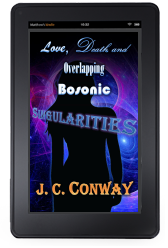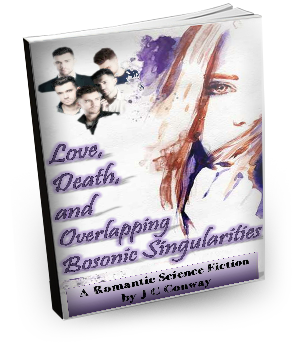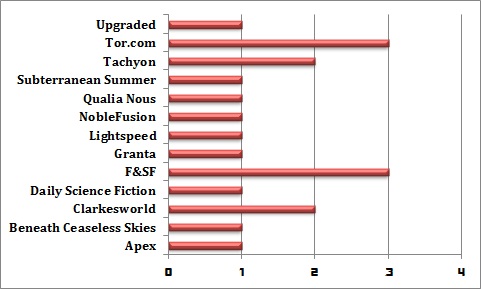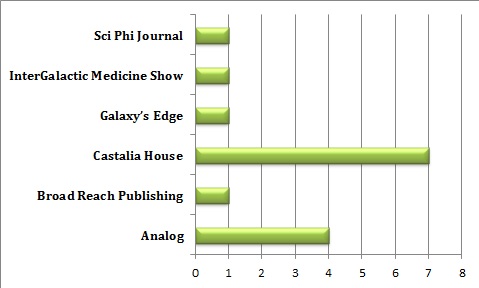 Here is the new design for the cover of the short story, “Love, Death, and Overlapping Bosonic Singularities,” a romantic science fiction available to eBook readers for 99¢. The cover is designed using exclusively MicrosoftPowerPoint for Office 2010. The right to use two pieces of art was obtained from Dollar Photo Club. A white background in one image was removed using PowerPoint’s “Set Transparent Color” feature, and the rest was a matter of arranging things, playing with basic fonts, and saving a single slide as a PDF file. (All of the paperback and e-Reader mock ups here are provided by Adazing Design.)
Here is the new design for the cover of the short story, “Love, Death, and Overlapping Bosonic Singularities,” a romantic science fiction available to eBook readers for 99¢. The cover is designed using exclusively MicrosoftPowerPoint for Office 2010. The right to use two pieces of art was obtained from Dollar Photo Club. A white background in one image was removed using PowerPoint’s “Set Transparent Color” feature, and the rest was a matter of arranging things, playing with basic fonts, and saving a single slide as a PDF file. (All of the paperback and e-Reader mock ups here are provided by Adazing Design.) The cover breaks at least one cardinal rule for amateur book cover designers–it uses five different fonts. But I think it fits the story and its title. The story involves Amy’s involuntary traversal through inconsistent realities. At the outset we’re aware that Amy doesn’t consider reality to be fixed, and in short order it becomes evident why she thinks that way–or at least one explanation becomes evident. Soon another explanation is offered that is as plausible, or more plausible, than the first. But still, that is just the beginning. In my clearly unqualified opinion, this broken stream of experience is well matched to the changing fonts of the title in the new cover.
The cover breaks at least one cardinal rule for amateur book cover designers–it uses five different fonts. But I think it fits the story and its title. The story involves Amy’s involuntary traversal through inconsistent realities. At the outset we’re aware that Amy doesn’t consider reality to be fixed, and in short order it becomes evident why she thinks that way–or at least one explanation becomes evident. Soon another explanation is offered that is as plausible, or more plausible, than the first. But still, that is just the beginning. In my clearly unqualified opinion, this broken stream of experience is well matched to the changing fonts of the title in the new cover.
Similarly, the title is, all by itself, quite clunky. One of the story’s original working titles was “Shuffle.” That title certainly fit the story, but not obviously so until after the story was read. As an introduction to the story, “Shuffle” was remarkably uninformative, and the story screamed for a title that better set the stage. Enter “Love, Death and Overlapping Bosonic Singularities” (the Oxford comma was added later). The clunkiness of the title is painstakingly deliberate. It darned near tells the story, or at least foreshadows the central personal struggle for Amy as well as the key SF element of the story. But it is a mouthful. And the problem with the old cover design was that the title was squeezed in there like it was not something that draws attention to itself–leading to the very natural question, “Why such a long title?” Better to simply embrace its abrasive length and syntax with a visual presentation consistent with its message. The font being “shuffled” as it is, says a bit more now about the story, and makes clear (or at least I’ve convinced myself for the time being it makes clear) that this title means something to the story.
 I still like the old cover design. But in a list of other covers with similar search criteria, it didn’t pop. All that effort to reflect the story and reveal the mood and problem of the tale, had the same trouble as the early working title, “Shuffle.” It didn’t capture the mood and promise of the story for a prospective reader. Rather, it was a satisfactory cover for a person that already had read the story. So out with the old, and in with the new.
I still like the old cover design. But in a list of other covers with similar search criteria, it didn’t pop. All that effort to reflect the story and reveal the mood and problem of the tale, had the same trouble as the early working title, “Shuffle.” It didn’t capture the mood and promise of the story for a prospective reader. Rather, it was a satisfactory cover for a person that already had read the story. So out with the old, and in with the new.
By the way, I also still like the artwork that was used to illustrate the story when it was first published in The Lorelei Signal edited by Carol Hightshoe. The associated artwork in that publication was a piece by Lee Kuruganti, who was also the design winner for the2oo8 Hugo Award Base, and who also illustrated Twisted Thorn, by Richard King Perkins II, in the same issue.
Finally, if you haven’t read it yet, and if you’re an e-Reader, give the story a glance. It’s available from many eBook sellers, and at most sites you can read the beginning for free. If you like it and want to read the rest, the full piece is just 99¢.
 Yesterday’s Kin, Nancy Kress (Tachyon)
Yesterday’s Kin, Nancy Kress (Tachyon) “A Guide to the Fruits of Hawai’i” by Alaya Dawn Johnson (F&SF)
“A Guide to the Fruits of Hawai’i” by Alaya Dawn Johnson (F&SF) “Jackalope Wives” by Ursula Vernon (Apex)
“Jackalope Wives” by Ursula Vernon (Apex) Love Is the Drug, Alaya Dawn Johnson (Levine)
Love Is the Drug, Alaya Dawn Johnson (Levine)

